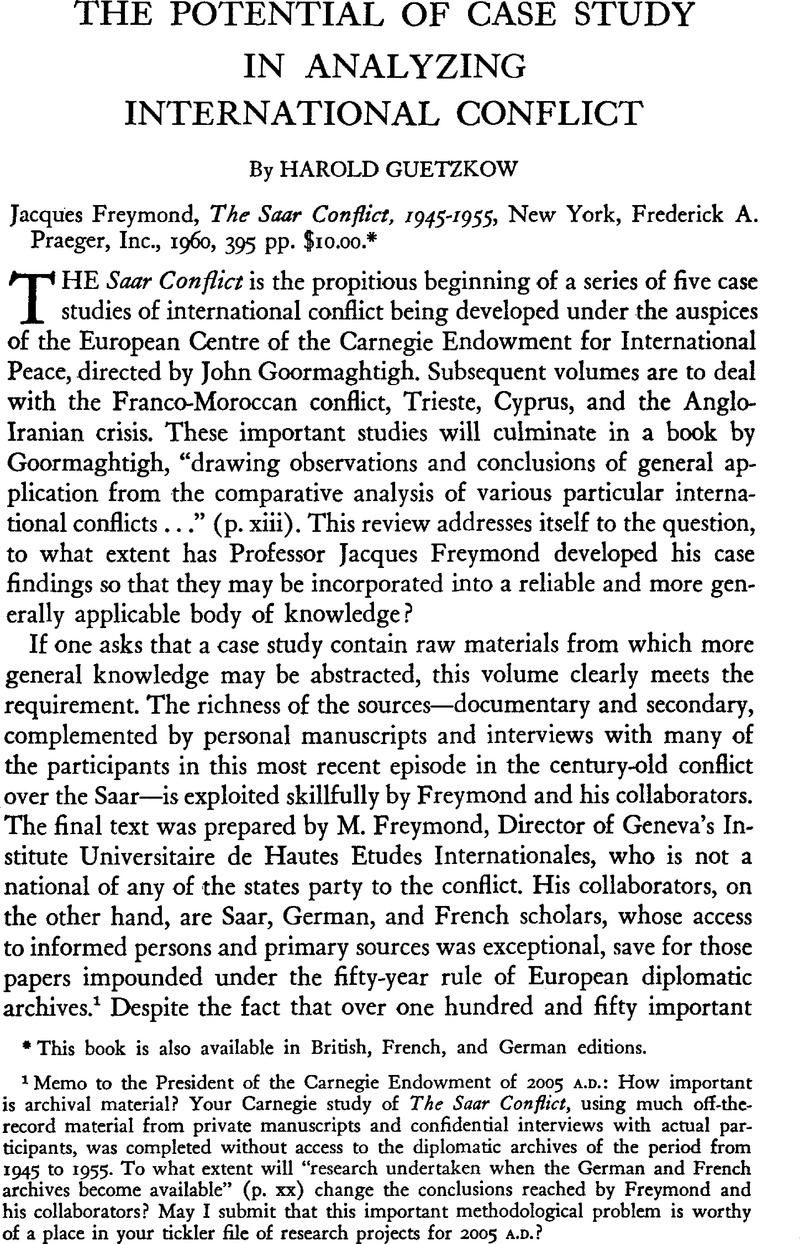No CrossRef data available.
Published online by Cambridge University Press: 18 July 2011

* This book is also available in British, French, and German editions.
1 Memo to the President of the Carnegie Endowment of 2005 A.D.: How important is archival material? Your Carnegie study of The Saar Conflict, using much off-the-record material from private manuscripts and confidential interviews with actual participants, was completed without access to the diplomatic archives of the period from 1945 to 1955. To what extent will “research undertaken when the German and French archives become available” (p. XX) change the conclusions reached by Freymond and his collaborators? May I submit that this important methodological problem is worthy of a place in your tickler file of research projects for 2005 A.D.?
2 A curious double standard with respect to the validity of evidence is applied by Freymond in the Analytical as contrasted with the Historical Study. Although Frey-mond's collaborators have amassed a substantial amount of evidence, which is then treated in rigorous, quantitative fashion in their studies of survey polls, newspapers, and parliamentary debates and votes for both French and German opinion on the Saar (pp. 272–83), Freymond intersperses his presentation of this data in his Analytical Study with comments almost derogatory of its validity: “The conclusions drawn from this analysis are, we admit, very tenuous …” (pp. 274–75); “These few quantitative analyses have no value as proof …” (p. 277); and “One must therefore be cautious about drawing conclusions …” (p. 283). Yet, without any display of the underlying data, in his Historical Study Freymond sometimes is willing to draw conclusions with abandon, as when he asserts: “The banning of the D.P.S. [Demokratische Partei Saar] had not crippled the opposition as the government had hoped. Neither had the efforts to undermine the prestige of its leaders met with success. Quite the contrary, as often happens with repressive measures, they had rather enabled those at whom they were aimed to increase their importance in the eyes of a public more likely to be swayed by sentiment than by reason” (p. 102). After describing the revision of the Conventions governing Franco-Saar economic relations in Chapter 5 on “The Saar Settlement as a Prerequisite, January, 1953-September, 1954,” Freymond without apology extravagantly claims, “The signing of the Conventions also had repercussions in Germany, as was inevitable” (p. 139). Why is a scholar willing to work forward with but shreds of evidence in the more traditional historical field, but then, when he is dealing with a new and strange quantitative methodology, inadvertently apply a more rigorous standard of acceptability?